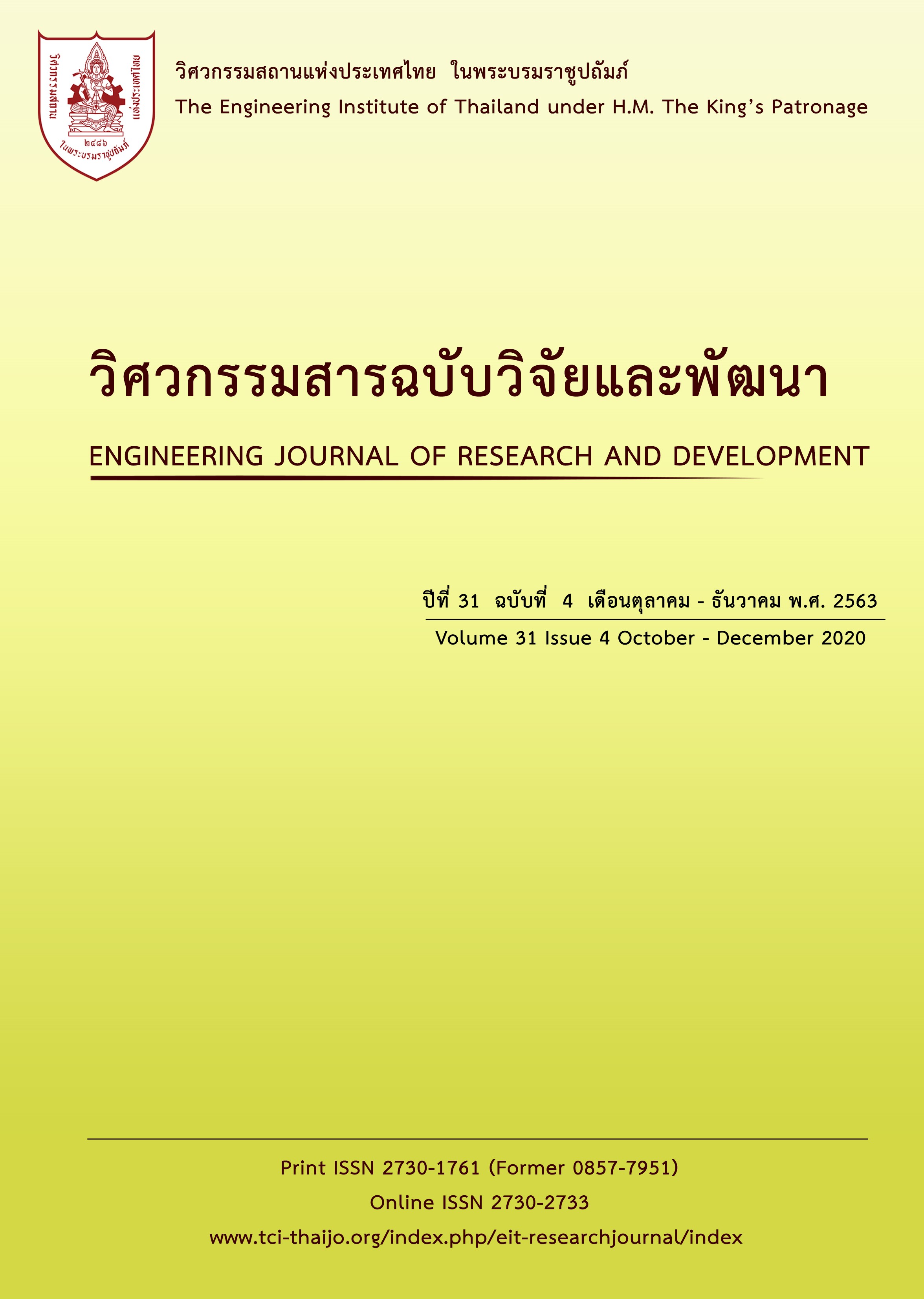STRENGTH AND DUCTILITY OF RESTRAINED STEEL-CONCRETE COMPOSITE BEAMS UNDER CYCLIC LOADS
Main Article Content
Abstract
Steel-concrete composite, which is known as composite structure has been popularly constructed for bridge construction. It is made from steel connected with slab concrete holding together again with shear connectors. This facilitates in loading capacity according to AISC and AASHTO standard designs. The results of the research bring out the fact that the fully composite has more loading capacity than the partially composite, that is 5.528 percent. The study also focuses on the deformation capacity ratio between the fully composite and the partial composite under the above mentioned condition. In this aspect , it is found that the deformation capacity of the fully composite is less than the partial composite, that is 12.636 percent. Drawing from the study, it is suggested that at the practical level, the steel concrete composite have to be design as the fully composite because with this design, it is able to hold the highest strength, prevent slipping between steel and slab concrete , and increase the durability.
Article Details
The published articles are copyright of the Engineering Journal of Research and Development, The Engineering Institute of Thailand Under H.M. The King's Patronage (EIT).
References
[2] ACI 318-08 and ACI318M-08, Building Code Requirements for Structural Concrete, American Concrete Institute, Farmington Hills, MI., 2008
[3] AISC 303-10, Code of Standard Practice for Steel Buildings and Bridges, , American Institute of Steel Construction, Chicago, IL., 2010.
[4] Ernst, S., Bridge, R. Q., and Wheeler, A. Correlation of beam test with pushout tests in steel-concrete composite beams. Journal of structural Engineering,
2010, ASCE, 136(2) 183-192
[5] Galambos, T. V. Deformation and Energy Absorption Capacity of Steel Structures in the Inelastic Range, Steel Research and Construction, AISI, Bulletin No. 8,
Washington, DC, 1968.
[6] Loh, H. Y., Uy, B., and Bradford, M. A. (2004). The Effects of partial shear connection in the hogging moment regions of composite beams Part I-Experimental
study. Journal of Constructional Steel Research, 2004, 60(6), 897-919.
[7] Shiming Chen, Yuanlin Jia. Requried and available moment redistribution of continuous steel-concrete composite beams. Journal of Constructional Steel
Research, 2008, 64, 167-175.


